AWS Certified Developer - Associate
AWS Fundamentals
AWS CloudFormation Demo
In this lesson, you'll learn how to work with AWS CloudFormation by deploying an EC2 instance using a YAML template. CloudFormation supports both YAML and JSON formats, but we will use YAML for this example.
We will create a file named "stack.yaml" to define a CloudFormation stack that deploys an EC2 instance along with a security group. The template is organized into several sections: Parameters, Resources, and Outputs.
Defining Resources
Under the Resources section, you define all the resources to be deployed by CloudFormation. In our example, we create an EC2 instance named "Ec2Instance." The resource type is specified using the AWS resource type identifier, in this case AWS::EC2::Instance.
Below is an example snippet that demonstrates how to define an EC2 instance resource:
Resources:
Ec2Instance:
Type: AWS::EC2::Instance
Properties:
For the correct resource type and its properties, refer to the AWS CloudFormation User Guide under the EC2 Basics section. Below is a portion of the documentation example for an EC2 instance:
Type: AWS::EC2::Instance
Properties:
AdditionalInfo: String
Affinity: String
AvailabilityZone: String
BlockDeviceMappings:
- BlockDeviceMapping
CpuOptions:
CpuOptions:
CreditSpecification:
CreditSpecification:
DisableApiTermination: Boolean
EbsOptimized: Boolean
ElasticGpuSpecifications:
- ElasticGpuSpecification:
ElasticInferenceAccelerators:
- ElasticInferenceAccelerator:
EnclaveOptions:
EnclaveOptions:
HibernationOptions:
HibernationOptions:
IamInstanceProfile: String
ImageId: String
InstanceInitiatedShutdownBehavior: String
InstanceType: String
KeyName: String
Monitoring: Boolean
NetworkInterfaces:
- NetworkInterface:
PlacementTenancy: String
PrivateIpAddress: String
SecurityGroupIds:
- String
SecurityGroups:
- String
SsmAssociations:
- SsmAssociation:
Tags:
- Tag
Tenancy: String
UserData: String
Volumes:
- Volume
After defining the resource type, specify its configuration in the Properties field. For example, to set the Amazon Machine Image (AMI) ID and key pair, you can use the following configuration:
Resources:
Ec2Instance:
Type: AWS::EC2::Instance
Properties:
ImageId: ami-041feb57c611358bd
KeyName: main
Tags:
- Key: Name
Value: myEc2Instance
Note
When choosing an AMI, navigate to the EC2 console, launch a new instance, select the desired image, and then copy its AMI ID.
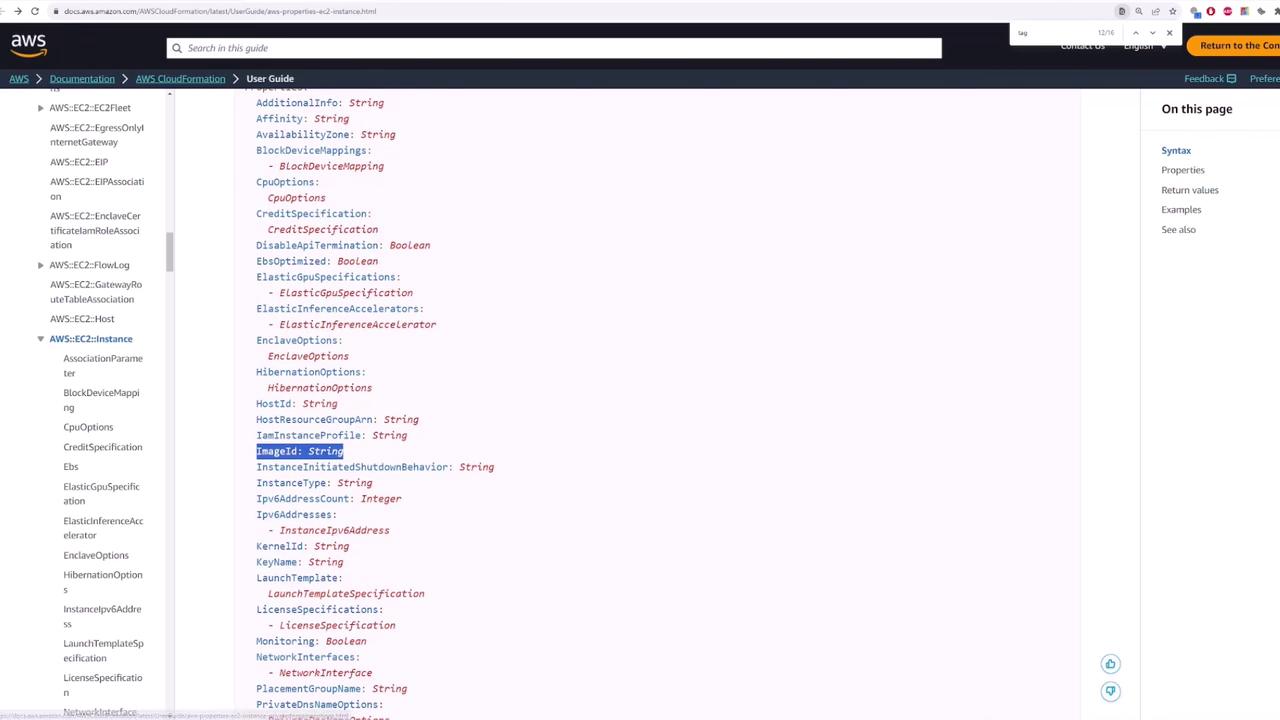

Adding a Security Group
Next, add a security group resource to control access to your EC2 instance. Under the Resources section, create a new resource called "InstanceSecurityGroup" with the type AWS::EC2::SecurityGroup. Configure the Properties with a group description and ingress rules. For example, to allow SSH access on TCP port 22:
Resources:
Ec2Instance:
Type: AWS::EC2::Instance
Properties:
ImageId: ami-041feb57c611358bd
KeyName: main
Tags:
- Key: Name
Value: myEc2Instance
InstanceSecurityGroup:
Type: AWS::EC2::SecurityGroup
Properties:
GroupDescription: Enable SSH access via port 22
SecurityGroupIngress:
- IpProtocol: tcp
FromPort: 22
ToPort: 22
CidrIp: 0.0.0.0/0
If you need to allow a range of ports (for example, from 1009 to 2000), adjust the FromPort and ToPort values accordingly.
Associating the Security Group with the EC2 Instance
To automatically associate the security group with your EC2 instance, include the SecurityGroups property in the EC2 instance configuration. Use CloudFormation's intrinsic function !Ref to reference the security group defined in the same template:
Resources:
Ec2Instance:
Type: AWS::EC2::Instance
Properties:
SecurityGroups:
- !Ref InstanceSecurityGroup
ImageId: ami-041feb57c611358bd
KeyName: main
Tags:
- Key: Name
Value: myEc2Instance
InstanceSecurityGroup:
Type: AWS::EC2::SecurityGroup
Properties:
GroupDescription: Enable SSH access via port 22
SecurityGroupIngress:
- IpProtocol: tcp
FromPort: 22
ToPort: 22
CidrIp: 0.0.0.0/0
Introducing Parameters
CloudFormation allows you to make the template dynamic by using input parameters. For instance, if you want the user to specify a name for the EC2 instance, define a Parameters section:
Parameters:
Ec2Name:
Type: String
Then modify the EC2 instance to use this parameter for its tag:
Resources:
Ec2Instance:
Type: AWS::EC2::Instance
Properties:
SecurityGroups:
- !Ref InstanceSecurityGroup
ImageId: ami-041feb57c611358bd
KeyName: main
Tags:
- Key: Name
Value: !Ref Ec2Name
InstanceSecurityGroup:
Type: AWS::EC2::SecurityGroup
Properties:
GroupDescription: Enable SSH access via port 22
SecurityGroupIngress:
- IpProtocol: tcp
FromPort: 22
ToPort: 22
CidrIp: 0.0.0.0/0
Similarly, you can add a parameter for the key pair. Use the following configuration to define a parameter with a dropdown populated by available key pairs:
Parameters:
KeyName:
Description: The EC2 key pair
Type: AWS::EC2::KeyPair::KeyName
Ec2Name:
Type: String
Resources:
Ec2Instance:
Type: AWS::EC2::Instance
Properties:
SecurityGroups:
- !Ref InstanceSecurityGroup
ImageId: ami-041feb57c611358bd
KeyName: !Ref KeyName
Tags:
- Key: Name
Value: !Ref Ec2Name
InstanceSecurityGroup:
Type: AWS::EC2::SecurityGroup
Properties:
GroupDescription: Enable SSH access via port 22
SecurityGroupIngress:
- IpProtocol: tcp
FromPort: 22
ToPort: 22
CidrIp: 0.0.0.0/0
Defining Outputs
Outputs enable you to extract data from your deployed resources. In this example, the public IP address of the EC2 instance is output so you can easily reference it after deployment:
Outputs:
PublicIp:
Description: Server Public IP
Value: !GetAtt Ec2Instance.PublicIp
The !GetAtt function retrieves attributes—for example, the PublicIp—from the specified resource.
Below is the complete CloudFormation template that combines all the elements discussed:
Parameters:
KeyName:
Description: The EC2 key pair
Type: AWS::EC2::KeyPair::KeyName
Ec2Name:
Type: String
Resources:
Ec2Instance:
Type: AWS::EC2::Instance
Properties:
SecurityGroups:
- !Ref InstanceSecurityGroup
ImageId: ami-041feb57c611358bd
KeyName: !Ref KeyName
Tags:
- Key: Name
Value: !Ref Ec2Name
InstanceSecurityGroup:
Type: AWS::EC2::SecurityGroup
Properties:
GroupDescription: Enable SSH access via port 22
SecurityGroupIngress:
- IpProtocol: tcp
FromPort: 22
ToPort: 22
CidrIp: 0.0.0.0/0
Outputs:
PublicIp:
Description: Server Public IP
Value: !GetAtt Ec2Instance.PublicIp
Deploying the CloudFormation Stack
Once your template is ready, follow these steps to deploy it using the AWS CloudFormation console:
- Open the CloudFormation service in the AWS console.
- Click on "Create stack" and select "Upload a template file."
- Choose your "stack.yaml" file and click "Next."
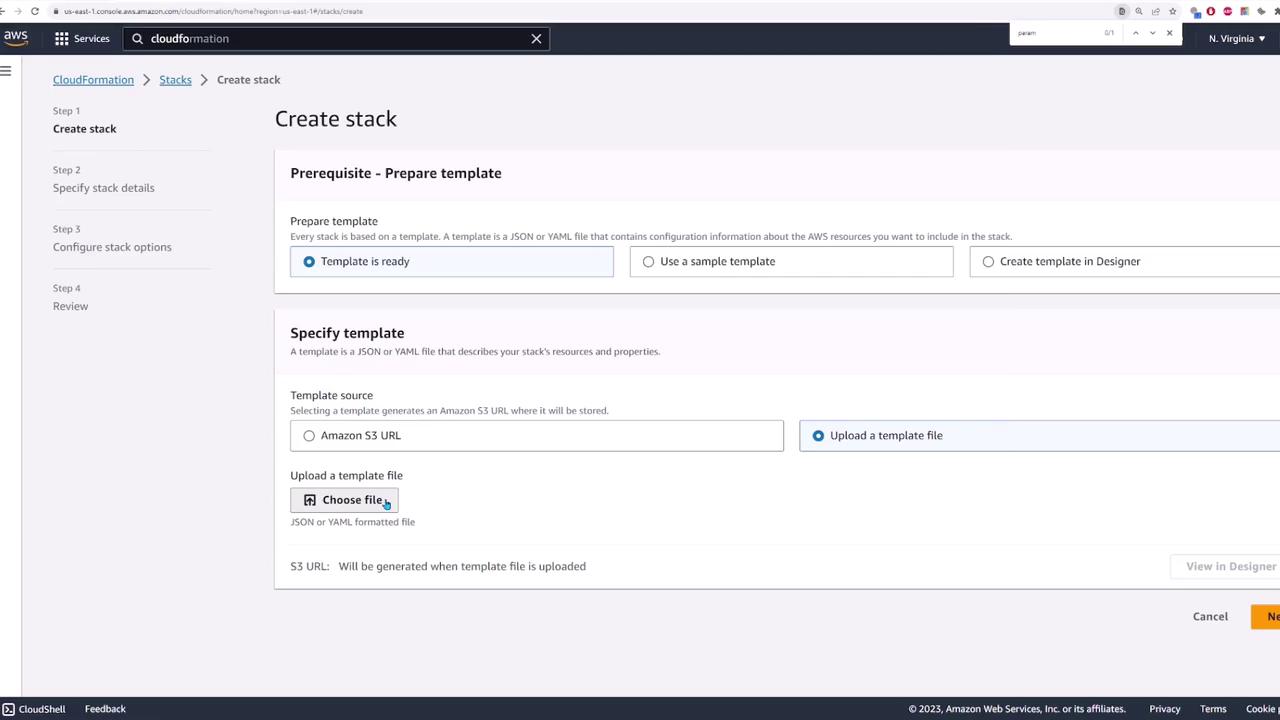
Enter a stack name (e.g., "my-deployment"). The template’s parameters will be displayed. Provide the EC2 instance name (for example, "this is the server") and select your key pair from the dropdown.
Click "Next" to configure stack options such as tags, permissions, and rollback options. You can leave these options blank if they are not required.
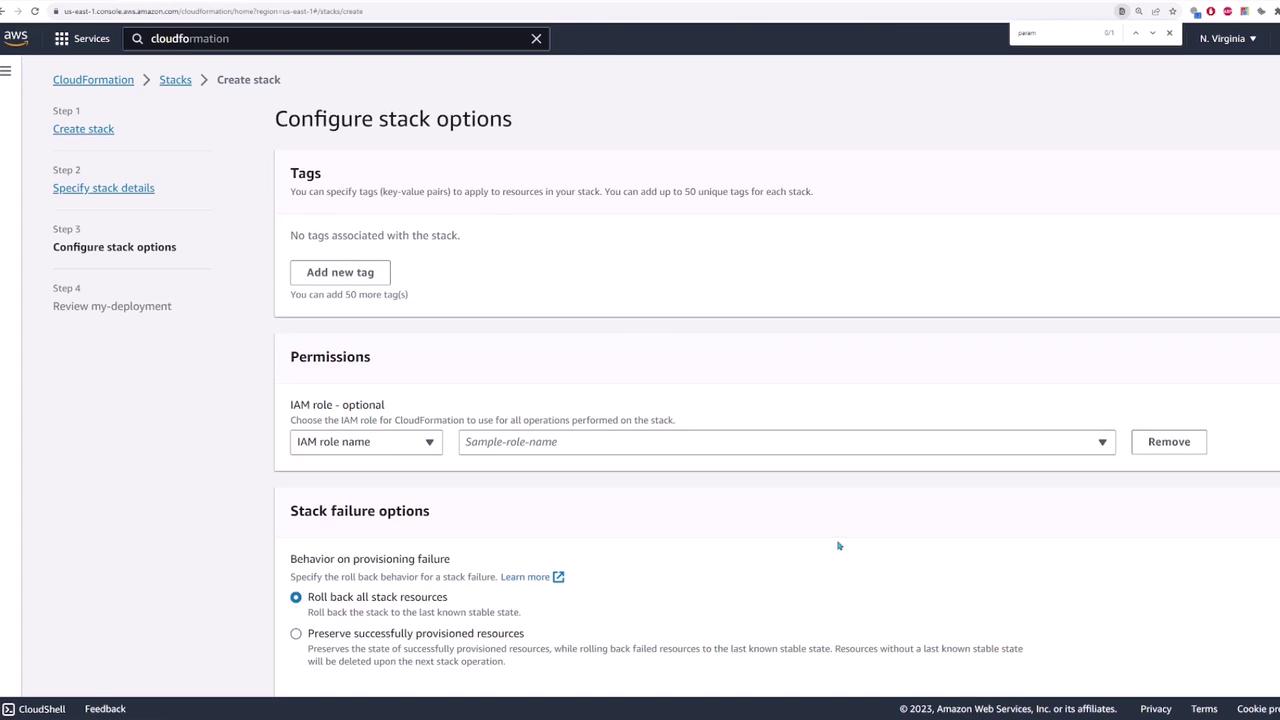
- Review your configuration and click "Submit" to deploy the stack.
After deployment, the CloudFormation console will display a "CREATE_COMPLETE" status along with a series of events that detail the creation of resources, such as the EC2 instance and security group.
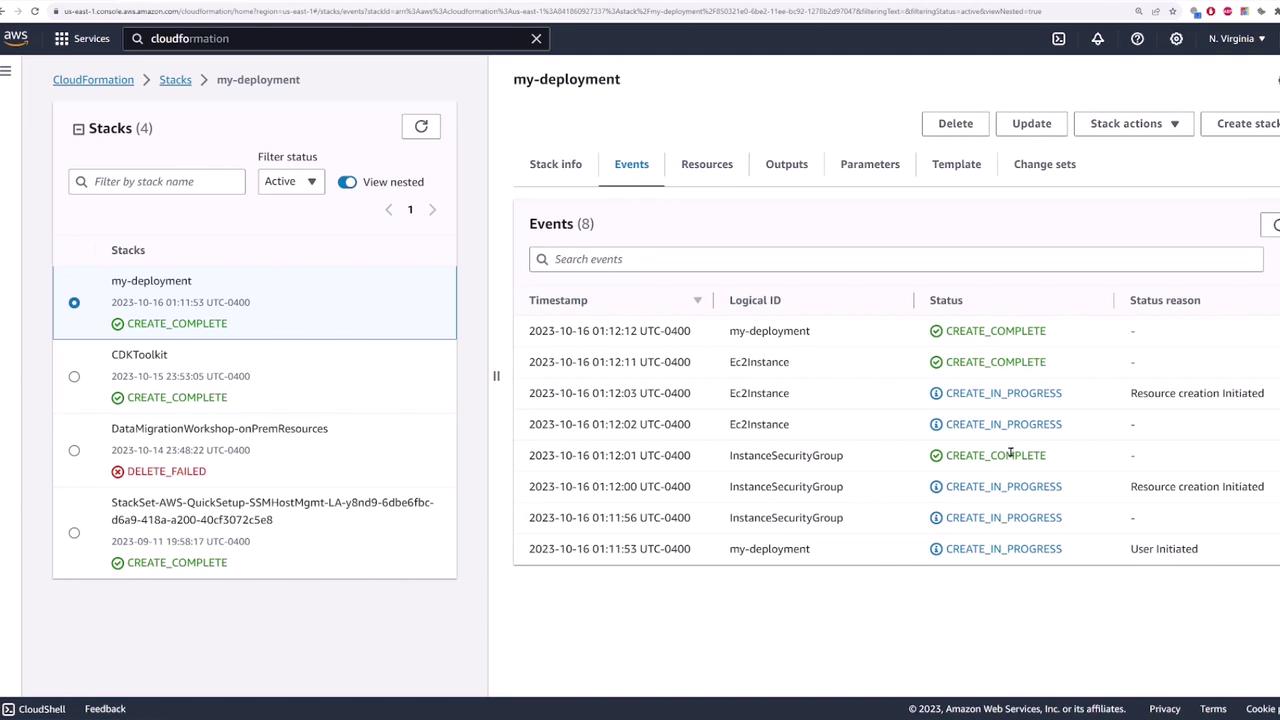
Once the stack is created, you can inspect the deployed resources by clicking on them. The Outputs section will display the public IP address of your EC2 instance, which you can use to access your server.
If you need to update the stack, select the stack in the CloudFormation console and choose the "Update" option. The console allows you to upload a modified template or select an alternative source.
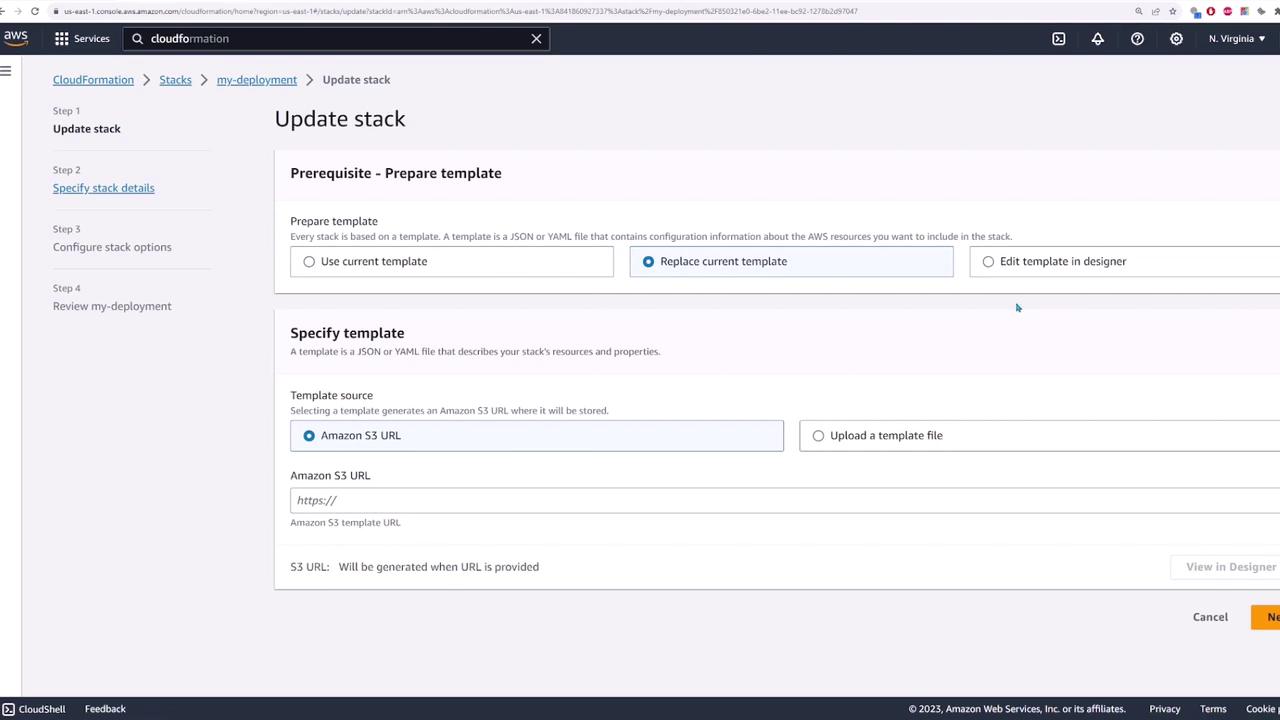
To delete the stack, simply select it in the CloudFormation console and choose "Delete."
This concludes the demo on working with AWS CloudFormation. By leveraging CloudFormation, you can automate the provisioning of AWS infrastructure consistently and efficiently. Happy deploying, and explore additional configurations and features to further enhance your AWS environment!
Watch Video
Watch video content
Practice Lab
Practice lab